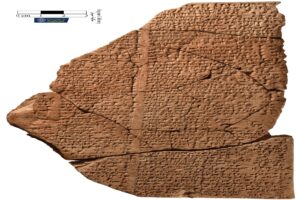Every so often, an old story resurfaces and goes viral via a new crop of Internet rovers. Such is the case with the “news” about the bodies of the Easter Island statues.
As early as 1914, archaeologists on Easter Island discovered that the heads of at least some of the megalithic statues, traditionally called moai, were attached to subterranean torsos, covered up over many centuries by erosion.
But that information remained largely hidden from the public until 2012 when a chain email containing images of full-bodied Easter Island statues taken from excavations in the 1950s and 2010s began circulating.
“The reason people think they are [only] heads is there are about 150 statues buried up to the shoulders on the slope of a volcano, and these are the most famous, most beautiful, and most photographed of all the Easter Island statues,” director of the Easter Island Statue Project, Jo Anne Van Tilburg, told Live Science. “This suggested to people who had not seen photos of [other unearthed statues on the island] that they are heads only.”

Photo: Cotsen Institute of Archaeology at UCLA
From 2010 until late 2014, Van Tilburg and several colleagues unearthed a number of Easter Island statues. The excavation documented for the first time the complex carvings found on the buried statues’ bodies, which their burial kept well protected from the elements.
Their work, as well as several galleries of images from the project, are accessible at eisp.org.
Some facts about the ‘moai’
Indigenous Polynesian peoples known as the Rapa Nui carved the moai between A.D. 1100 and 1500. Archaeologists believe that these statues of volcanic rock represent the ancestors of the Rapa Nui. They likely created a moai every time an important tribal figure passed away, according to Van Tilburg. They stand up to 10m tall and weigh up to 80 tons. Nearly 1,000 of the statues reside on the island.

An excavated moai, circa 2014. Photo: Easter Island Statue Project
Early travelers to the remote island, which lies some 3,200km off the coast of South America, included Captain James Cook.
“We could hardly conceive how these islanders, wholly unacquainted with any mechanical power, could raise such stupendous figures,” the British mariner wrote in 1774.
According to the Smithsonian, by the time of Cook’s arrival, the islanders had toppled many of their statues. And those left standing were neglected.






